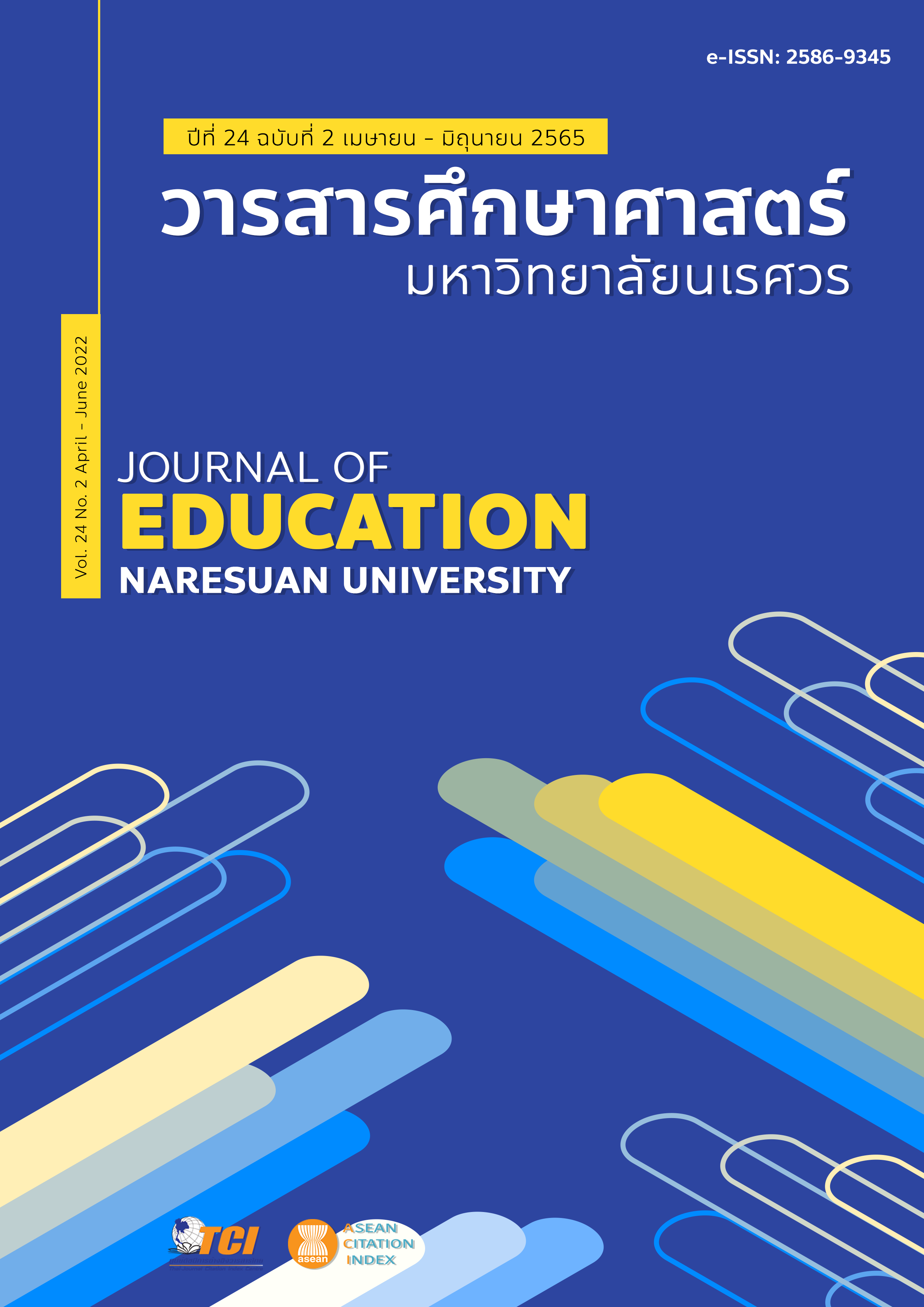SUSTAINING THE CULTURE OF QUALITY IN TEACHER EDUCATION INSTITUTIONS
Main Article Content
Abstract
Educational institutions are accountable to the stakeholders in ensuring quality. Valuable stakeholder feedback will serve as a check and balance in quality assurance framework. The goal of this qualitative descriptive design is to present a descriptive summary of the stakeholders’ feedback of the accreditation process in Teacher Education institutions. Data saturation was guided by what constitutes the sample size. The 106 participants, selected by purposive sampling, were stakeholders from eight (8) teacher education institutions accredited by three (3) accrediting bodies. The participants come from three categories of stakeholders from each institution, namely: administrators, faculty and students. A semi-structured interview guide was utilized during the focus group discussion (FGD) composed of five to seven participants. Following the Procedural Spiral Approach (Creswel, 2013), thematic analysis was done by developing and applying a coding system to logically organize themes that emerged from the data. Derived themes are: benefits of accreditation, challenges of accreditation and proposals for future accreditation. The benefits include: continuous improvement, graduate employability and stakeholder satisfaction. The challenges are: time constraints and tedious preparation of the documents; varied interpretation; limited accreditation time. Proposals include: organized and efficient process in preparation of evidences; rigorous selection and training of accreditors; and implementation of accreditation recommendations. Therefore, accreditation has its benefits and challenges. The benefits of accreditation affirm the necessity of accreditation while the challenges and proposals need to be responded to sustain the culture of quality in Teacher Education institutions.
Article Details

This work is licensed under a Creative Commons Attribution-NonCommercial-NoDerivatives 4.0 International License.
The owner of the article does not copy or violate any of its copyright. If any copyright infringement occurs or prosecution, in any case, the Editorial Board is not involved in all the rights to the owner of the article to be performed.
References
Atmowardoyo, H. (2018). Research methods in TEFL studies: Descriptive research, case study, error analysis, and R & D. Journal of Language Teaching and Research, 9(1), 197-204. http://dx.doi.org/10.17507/jltr.0901.25
Baker, A., Perreault, D., Reid, A., & Blanchard, C. M. (2013). Feedback and organizations: Feedback is good, feedback-friendly culture is better. Canadian Psychology/Psychologie Canadienne, 54(4), 260-268. https://psycnet.apa.org/doi/10.1037/a0034691
Beerkens, M., & Udam, M. (2017). Stakeholders in higher education quality assurance: Richness in diversity? Higher Education Policy, 30(3), 341-359. https://link.springer.com/article/10.1057/s41307-016-0032-6
Berry, A. (2015). Corporate social responsibility within the quality assurance standards of higher educational accreditation agencies. Journal of Higher Education Theory and Practice, 15(1), 86-100.
Cao, Y., & Li, X. (2014). Quality and quality assurance in Chinese private higher education: A multi-dimensional analysis and a proposed framework. Quality Assurance in Education, 22(1). 65-87. https://files.eric.ed.gov/fulltext/EJ1132941.pdf
Commission on Higher Education. (2005). CMO No.1 s2005. Retrieved from www.ched.gov.ph
Commission on Higher Education. (2012). CMO No.46 s2012. Retrieved from www.ched.gov.ph
Conchada, M. I. P., & Tiongco, M. M. (2015). A review of the accreditation system for Philippine higher education institutions. Retrieved from http://hdl.handle.net/10419/127044
Cope, D. G. (2014). Methods and meanings: Credibility and trustworthiness of qualitative research. Oncology Nursing Forum, 41(1), 89-91. https://doi.org/10.1188/14.ONF.89-91
Creswell, J. W. (2013). Research design: Qualitative, quantitative, and mixed methods approaches (4th ed.). London: SAGE Publications.
Duman, S. N. (2020). What do the teacher educators think about accreditation: a mixed method research. International Journal of Eurasian Education and Culture, 5(10), 1670-1703.
Fusch, P. I., & Ness, L. R. (2015). Are we there yet? data saturation in qualitative research. The Qualitative Report, 20(9), 1408-1416. https://doi.org/10.46743/2160-3715/2015.2281
Grunow, A., & Hough, H. (2018). Continuous improvement: building system capacity to learn. Getting Down to Facts (Research Brief), 1-9.
Hou, A. Y. C., Zhang, J., Justiniano, D., Lu, G., & Jun, G. (2020). Internal and External Quality Assurance of Higher Education in the Asia-Pacific Region. In Global Trends in Higher Education Quality Assurance (pp. 168-224). Brill Sense.
Hickman, L., & Akdere, M. (2017). Stakeholder theory: implications for total quality management in higher education. International Conference of Lean Six Sigma. Indiana: West Lafayette. https://doi.org/10.5703/1288284316381
Kumar, P., Shukla, B., & Passey, D. (2020). Impact of accreditation on quality and excellence of higher education institutions. Investigación Operacional, 41(2), 151-167. https://eprints.lancs.ac.uk/id/eprint/141916/
Kovach, J., & Fredendall, D. (2014). managerial impacts of learning and continuous improvement practices. The Journal for Quality and Participation, 37(2), 25-28.
Mukhopadhyay, R. (2014). Quality in teacher education: various parameters and effective quality management. IOSR Journal of Humanities and Social Science, 19(2), 66-71.
Nassaji, H. (2020). Good qualitative research. Language Teaching Research, 24(4), 427-431 https://doi.org/10.1177%2F1362168820941288
Neelaveni, C., & Manimaran, S. (2015). A study on students’ satisfaction based on quality standards of accreditation in higher education. India Educational Research and Reviews,10(3), 282-289. https://doi.org/ 10.5897/ERR2014
Nguyen, H., Evers, C, W., & Marshall, S. (2017). Accreditation of Viet Nam's higher education: achievements and challenges after a dozen years of development. Quality Assurance in Education, 25(4), 475-488.
Oraison, H., Konjarski, L., & Howe, S. (2019). Does university prepare students for employment? Alignment between graduate attributes, accreditation requirements and industry employability criteria. Journal of Teaching and Learning for Graduate Employability, 10(1). https://files.eric.ed.gov/fulltext/EJ1235685.pdf
Peel, K. L. (2020). A beginner's guide to applied educational research using thematic analysis. Practical Assessment, Research, and Evaluation, 25(1), 2. https://doi.org/10.7275/ryr5-k983
Manning, S. (2018). Quality assurance and quality improvement: why and how accreditation works. In Phillips, S. D., & Kinser, K. (Eds.), Accreditation on the edge: Challenging quality assurance in higher education (pp.13-30). JHU Press.
Siddiqua, N., & Khan, S. S. (2015). Institutional perspective for accreditation of teacher education program: effectiveness of processes and tools. Journal of History and Social Sciences, 6(2). https://jhss-uok.com/index.php/JHSS/article/view/51
Siedlecki, S. L. (2020). Understanding descriptive research designs and methods. Clinical Nurse Specialist, 34(1), 8-12. https://doi.org/10.1097/NUR.0000000000000493
Westerheijden, D. F., Epping, E., Faber, M., Leisyte, L., & de Weert, E. (2013). Stakeholders and quality assurance. Journal of the European Higher Education Area, 4, 71-86. http://www.ehea-journal.eu/


